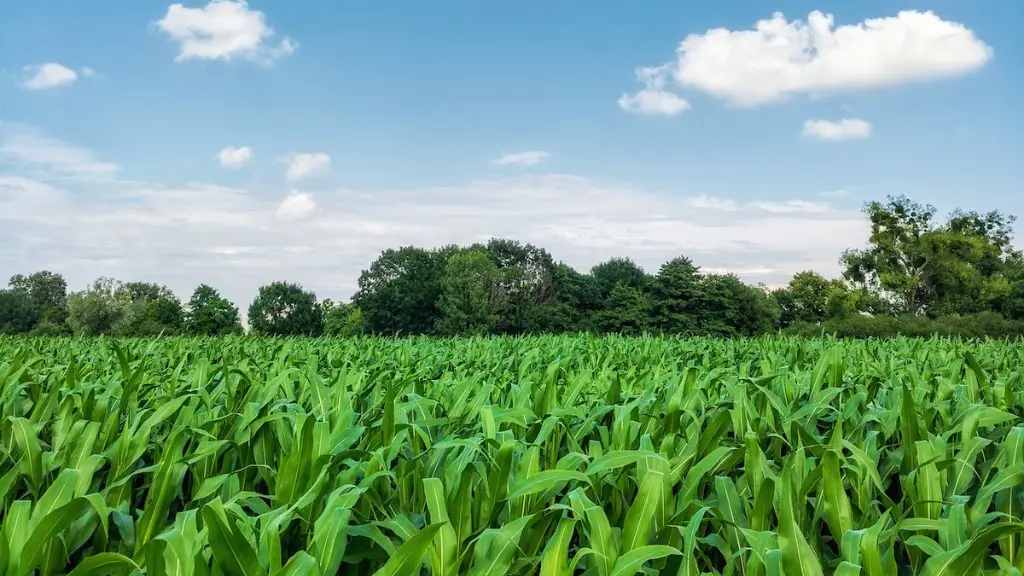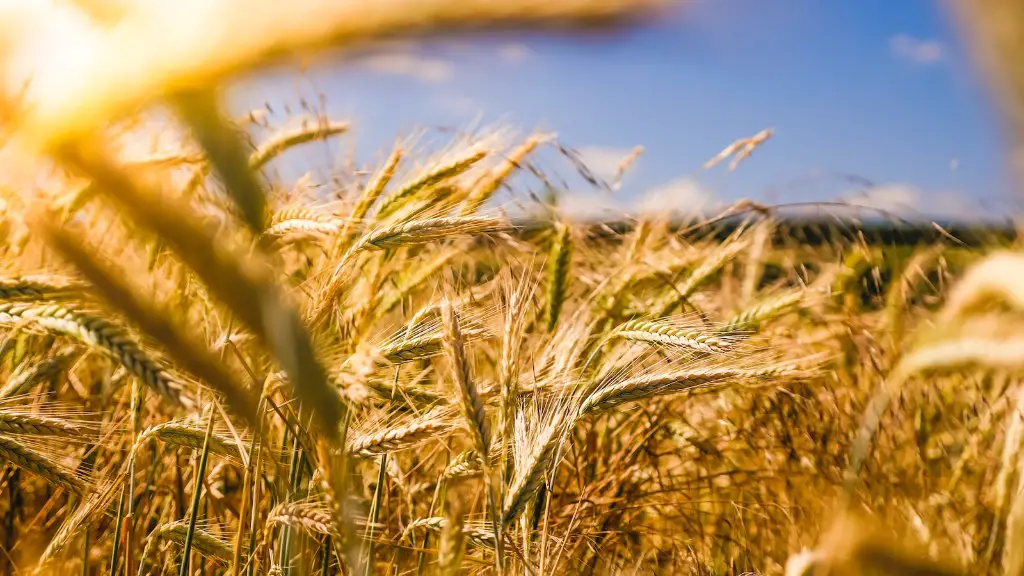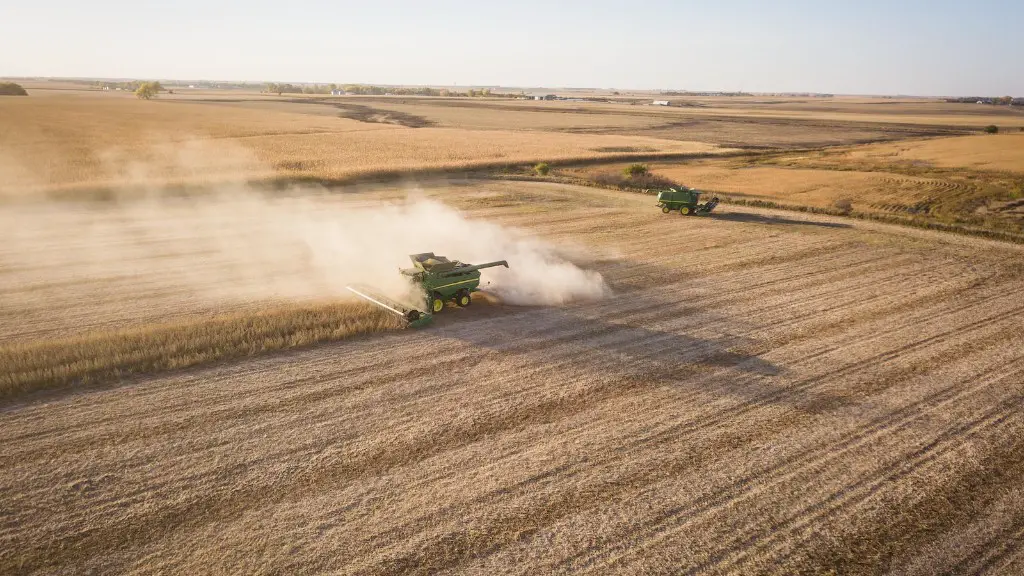The Agricultural Productivity increases by various methods like Crop Rotation, Contour Plowing, Strip Cropping, Terracing and Use of Liming Materials. Crop Rotation is the system of growing different kinds of crops in succession on the same piece of land. The main objective of crop rotation is to make the most efficient use of sunlight, soil nutrients, and water. Contour Plowing is the plowing of soil along the contour lines of the land to reduce water runoff and soil erosion. Strip Cropping is the growing of two or more crops in strips that alternate with each other. Terracing is the building of walls or embankments to create a series of level areas on a slope. The use of Liming Materials is the application of limestone or other materials to raise the pH of the soil.
There is no one-size-fits-all answer to this question, as the best way to increase agriculture productivity will vary depending on the specific circumstances and resources available. However, some general tips on how to improve agricultural productivity include:
1. Use improved seeds and crop varieties that are better suited to your local conditions.
2. Adopt better irrigation and water management practices.
3. Fertilize crops properly to ensure they have the nutrients they need to grow.
4. Use pest and disease control measures to reduce losses.
5. Implement good cropping and tillage practices.
6. Properly store and handle crops to minimize post-harvest losses.
7. Make use of modern technology and agrichemicals where appropriate.
What increases agricultural productivity?
Productivity growth in agriculture can be attributed to investments in research and development (R&D), extension, education, and infrastructure. These investments help farmers to be more efficient and productive in their work, and ultimately lead to higher yields and incomes. Agricultural productivity growth is essential for ensuring food security and reducing poverty, and these investments are critical for achieving these goals.
Farmers have long used machines to help with the agricultural process, and in recent years, the use of machines has only increased. By utilizing agricultural equipment, farmers are able to get more work done in a shorter amount of time. Heavy equipment like tractors and harvesting tools makes the process of planting, maintaining, and harvesting more efficient. In addition, machines can help with tasks that are difficult or dangerous for humans to do, such as spraying pesticides or working in extremely hot or cold conditions. While machines have made farming more efficient, they have also made it more expensive, as farmers must purchase and maintain the equipment.
Is an important way to increase agricultural productivity
There are many ways to improve farming productivity, but some of the most important methods include implementing land reforms, interplanting, and planting more densely. Other important methods include raised beds, smart water management, heat tolerant varieties, and using nitrogen.
Seed, irrigation, and fertilizers have all improved vastly, helping farmers increase yields. This has been a huge help to farmers all over the world, and has led to increased food production and security.
What are 4 ways to improve the agriculture?
Mark Jones is a researcher at the University of California, Davis. His area of expertise is in agricultural productivity and inclusiveness. He has worked on a number of projects related to improving market access, regulations, and governance for smallholder farmers in developing countries. He is also interested in the use of information technology for smallholder farmers and in the adoption of genetically modified (GM) crops.
Output per hour can increase over time for a variety of reasons, including technological advances, improved worker skills, improved management practices, and economies of scale in production. Additionally, increases in the amount of non-labor inputs used can also contribute to increases in output per hour.
What are five ways to improve productivity?
1. Keep things simple: When it comes to maximize effectiveness, you should keep things as simple as possible. This means having a clear and concise goal that you can easily track and measure.
2. Set reminders: One way to stay on track and maximize effectiveness is to set reminders for yourself. This can be done through a productivity app, your calendar, or even a simple to-do list.
3. Review goals daily: Another great way to maximize effectiveness is to review your goals on a daily basis. This will help you stay focused and motivated, and also help you to make any necessary adjustments along the way.
4. Minimize time-wasting activities: One of the most important things you can do to maximize effectiveness is to minimize time-wasting activities. This means taking a close look at your daily routine and eliminating anything that is not absolutely essential.
5. Use productivity apps: There are many great productivity apps out there that can help you maximize effectiveness. Some of our favorites include Asana, Trello, and Evernote.
6. Motivate your team: If you’re leading a team, it’s important to keep them motivated. This can be done by setting
There are a number of ways to increase agricultural yield per unit of land:
– Diversify to value added crops: This can help to increase incomes and also reduce costs.
– Reducing wastages: This includes reducing losses during storage and transport, as well as reducing post-harvest losses.
– Improving post-harvest management: This includes better storage facilities and infrastructure, as well as better management of agricultural products.
– Improving water management: This includes better irrigation practices, as well as more efficient use of water resources.
What are five good agricultural practices
Good agricultural practices are important for maintaining the health of animals and the quality of their products. Animals that produce milk need to be healthy, and an effective health care programme should be in place. Milking hygiene is important to prevent the spread of disease, and milk should be harvested and stored under hygienic conditions. Animal feeding and water are also crucial to animal health, and animal welfare should be considered in all aspects of management. The environment also plays a role in animal health, and farms should be managed in a way that minimises environmental pollution.
Most agricultural soils in the United States have been disturbed by tillage at some point. Tillage is the process of manipulating the soil to prepare it for planting or other purposes, and it can have a number of negative impacts on the soil. The most significant impact is soil erosion, which can lead to a loss of productivity and degradation of the soil. Other impacts of tillage include compaction, reduced water infiltration, and reduced soil organic matter.
No-till or reduced-till methods are an alternative to traditional tillage that can help reduce these impacts. No-till means that the soil is not disturbed at all, and reduced-till means that only a minimal amount of disturbance is done. These methods involve inserting seeds directly into undisturbed soil, which can reduce erosion and improve soil health.
How do farmers increase their crop yield?
There are many ways to increase crop yield, but some of the most important include: ensuring high quality seeds, being proactive in monitoring crop growth, using accurate weather prediction to optimize irrigation, and using smart application of fertilizer and crop protection methods. All of these factors play a role in maximizing field productivity and ensuring a successful harvest.
There are a few key things farmers can do to maintain or increase profits. Firstly, they need to increase production. Secondly, they need to attract higher prices for their products. And thirdly, they need to lower their costs. While individually price may be the largest driver of profit, making numerous small changes across the business that cumulatively have a large impact on overall profit may be more achievable.
What 2 things can improve productivity
1. Stop multitasking: It can be tempting to want to take care of a few tasks at once, especially if they seem small or easy. However, research has shown that multitasking can actually decrease productivity. Instead, focus on one task at a time and give it your full attention.
2. Take breaks: It may seem counterintuitive, but taking breaks can actually help increase productivity. Taking a few minutes to walk around or grab a cup of coffee can help refresh your mind and allow you to return to your work with fresh energy.
3. Set small goals: Trying to accomplish too much at once can be daunting and lead to frustration. instead, break your goals down into small, achievable pieces. Completing a series of small tasks will give you a sense of accomplishment and keep you motivated.
4. Take care of the biggest tasks when you’re most alert: It makes sense to tackle the most challenging tasks when you’re feeling your best. Save the easier tasks for when your energy levels start to dip.
5. Implement the “two-minute rule”: If a task can be completed in two minutes or less, do it immediately! This will help you avoid procrastination and keep your To-Do list from
It is no secret that the key to a successful business is a positive attitude and the involvement of management. A positive attitude creates a positive work environment, which in turn, allows employees to be more productive. Good working conditions, including the availability of tools and equipment to raise productivity, are also important. And, of course, availability of water, power, and other input supplies is crucial.
What are the 5 main factors that affect productivity?
There are a lot of factors that can affect productivity in the workplace. Some of these include the work environment, training and development opportunities, pay structure, employee wellness, diversity, technology, and production factors. Having a good balance of these things can help create a productive workplace.
Planning, prioritizing, and purpose are all essential pillars of strong and consistent productivity levels. Planning ahead can help you stay on track and prevent you from getting sidetracked. Prioritizing tasks can help you stay focused on what’s most important. And having a clear purpose for why you’re doing something can help keep you motivated.
What are the 4 most important determinants of productivity
The paper suggests that productivity can be determined by four different types of factors: economic, institutional, social, and physical. Each type of factor can have a positive or negative impact on productivity. For example, a country’s economic performance may be negatively affected by high levels of corruption. Similarly, a country’s institutions may be ineffective or nonexistent, social unrest may be present, or the physical infrastructure may be poor.
It is important to take breaks while working on long tasks in order to maintain a constant level of performance. Some research has shown that taking short breaks during long tasks helps you to maintain a constant level of performance; while working at a task without breaks leads to a steady decline in performance.
Conclusion
There is no one-size-fits-all answer to this question, as the best way to increase agricultural productivity will vary depending on the specific circumstances and resources available. However, some general tips on how to increase agricultural productivity include:
– improving soil fertility through additions of organic matter or other amendments
– using more efficient irrigation techniques
– planting crops that are better suited to the local climate and soil conditions
– employing better pest and disease management practices
– adopting new technologies and production methods
There are a number of ways to increase agriculture productivity. One way is to increase the amount of land that is devoted to agriculture. Another way is to increase the amount of water that is available for agriculture. Another way is to improve the quality of the soil.





